TPMS – Tire Pressure Monitoring System Explained
The yellow warning light on the dashboard (tire symbol with an escalation mark) is the TPMS warning light.
The main function of the Tire Pressure Monitoring System (TPMS) light is to warn the driver that the air pressure in at least one tire is low.
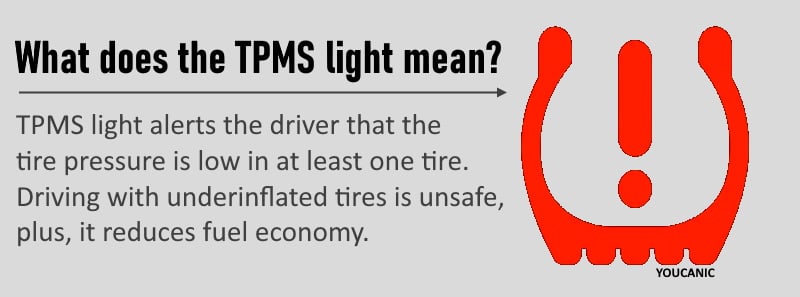
Underinflated and flat tires create unsafe driving conditions, leading to premature tire wear and decreased fuel economy. If the TPMS light on your dashboard is illuminated, you must stop and check the tires. If the TPMS light is flashing, it indicates a problem with the TPMS system.
The TPMS light comes on when the tire pressure in one tire drops by 25% or about 5 PSI. A flat tire or tire pressure loss can cause this. If you have a flat tire or low tire pressure, install the spare tire or call a tow truck.
This is how a flat tire looks. Add air or repair the damaged tire if you have the TPMS light on due to a flat tire.

If one of the tires is slightly low, you can usually drive to the nearest gas station or use a portable air compressor to add air wherever you are.
Do not drive more than a short distance if your tire has lost significant pressure; otherwise, you will cause permanent damage to the tire and maybe eventhe wheel.
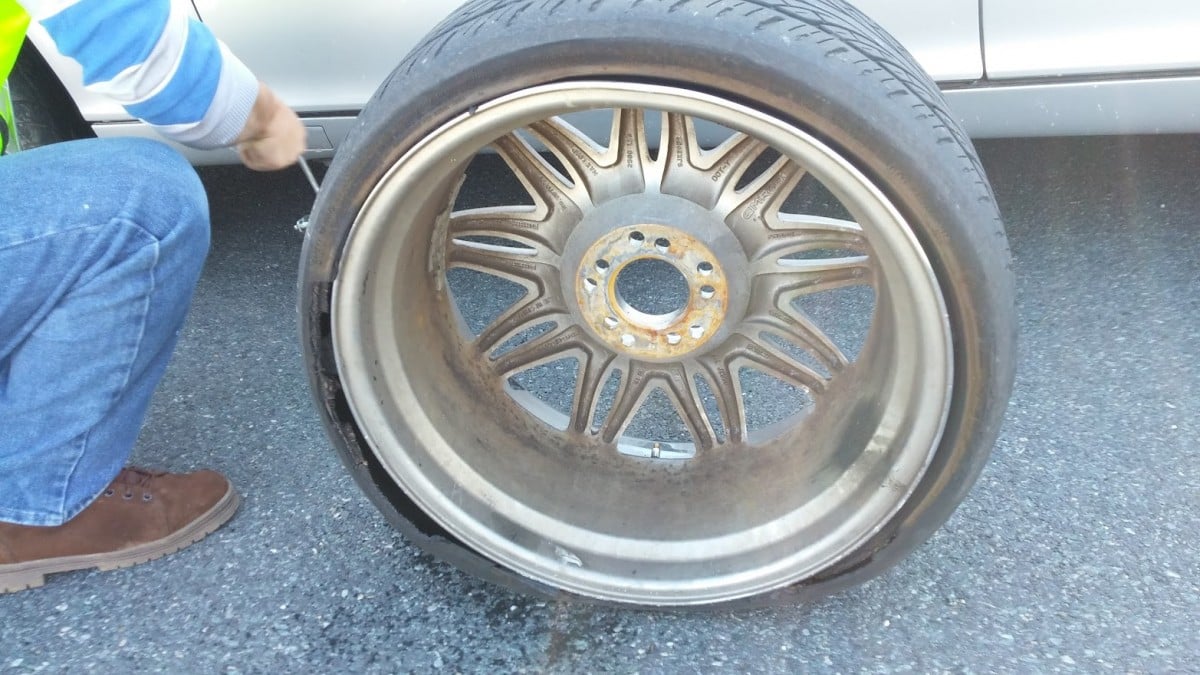
Your tire may be losing air due to a nail, a screw in the tire, a cut, a faulty valve stem, or a cracked rim.
Driving with the TPMS warning light (low tire pressure) can reduce fuel economy, cause uneven tire wear, and cause poor vehicle handling. Do not ignore that little orange TPMS light or TPMS error message on the dashboard.
My TPMS light comes on soon after I add air.
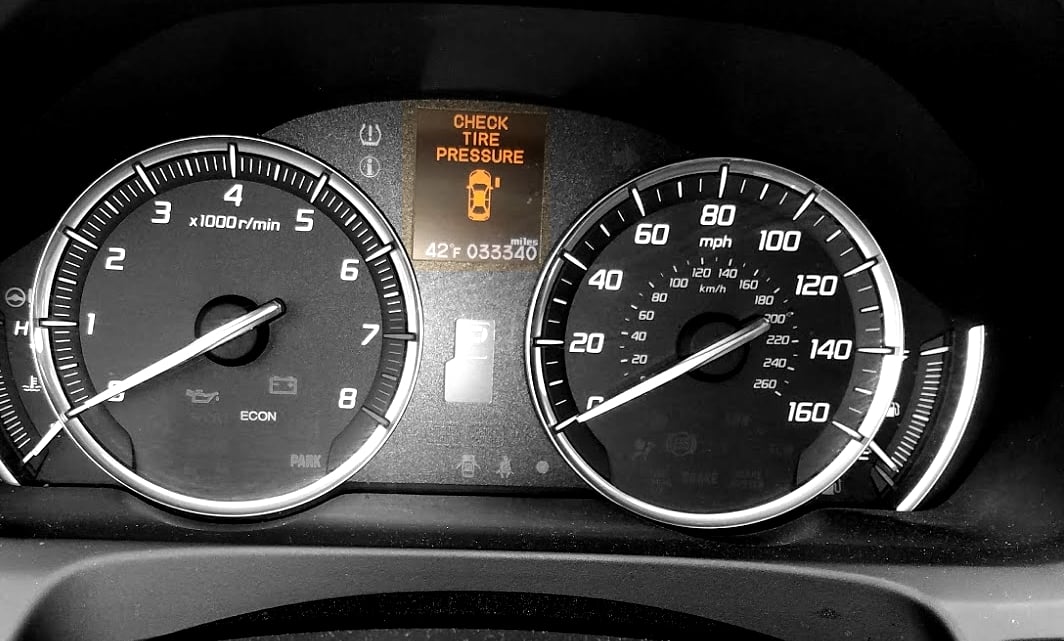
If one of your tires has a nail or screw, it will slowly lose air. The TPMS light will come on every day and require that you add air to your tire frequently. When your TPMS light comes on, ensure you do not have a flat tire.

If you inspect the tires, and they look normal, but the TPMS light is on, one of the tires may be slightly low in pressure.
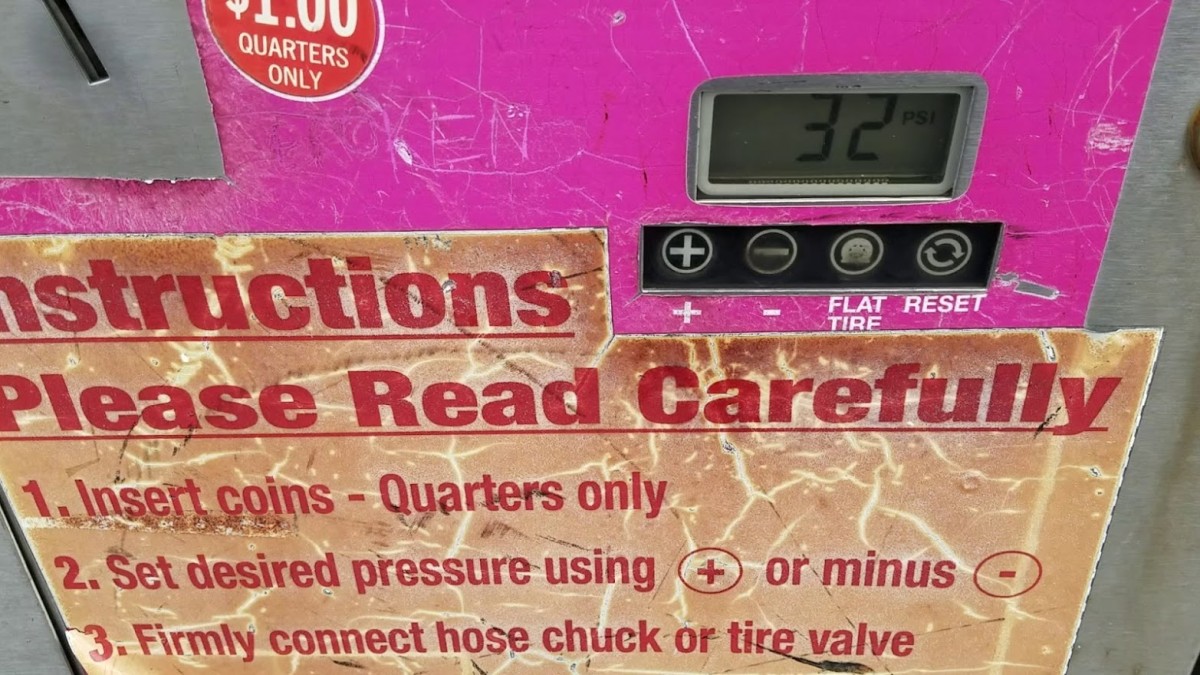
Drive at reduced speed to the nearest gas station and check the tire each tire meets the recommended tire pressure shown on the sticker found on the driver’s door.
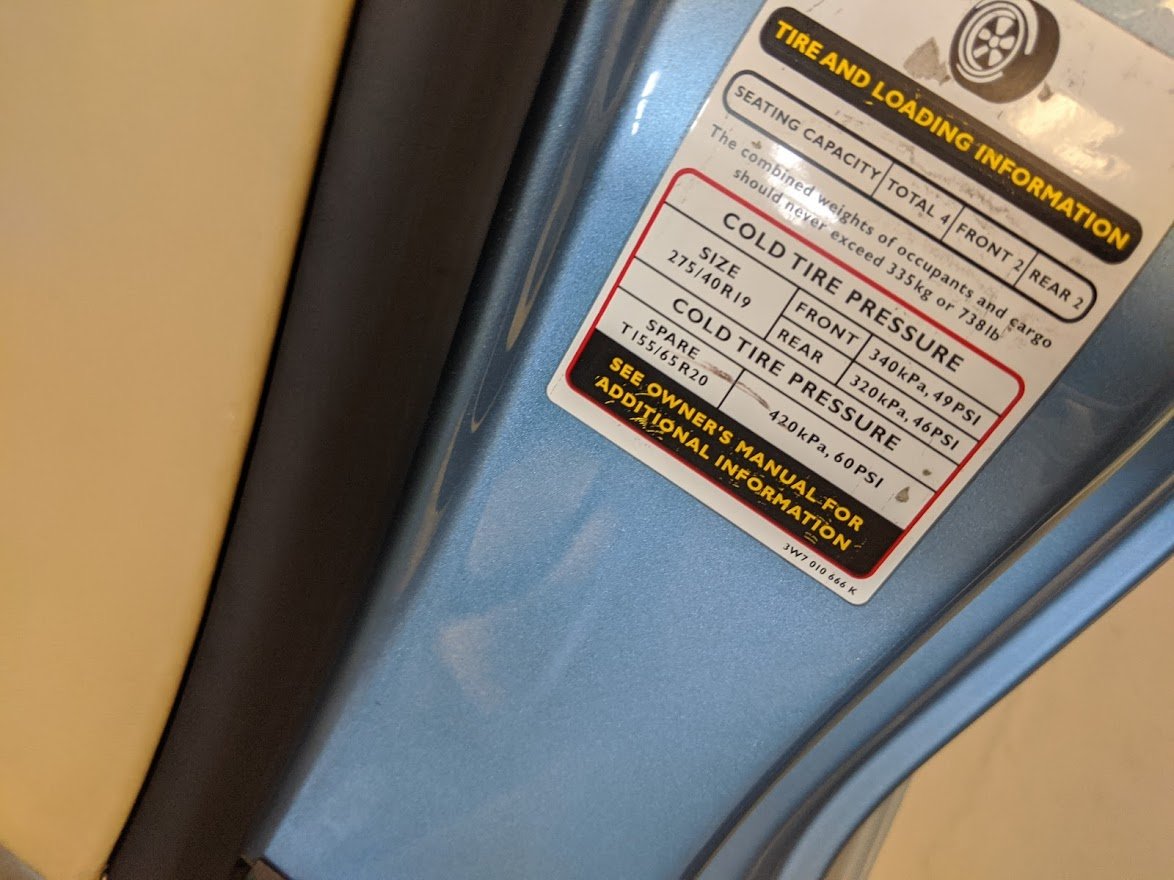
If any tire is low, add air to bring the air pressure to the value shown on the door sticker plus 2 PSI higher. In other words, if your sticker shows 34 PSI recommended cold tire pressure, you should inflate the tires to 36-37 PSI.
Do all cars have tire pressure monitoring?
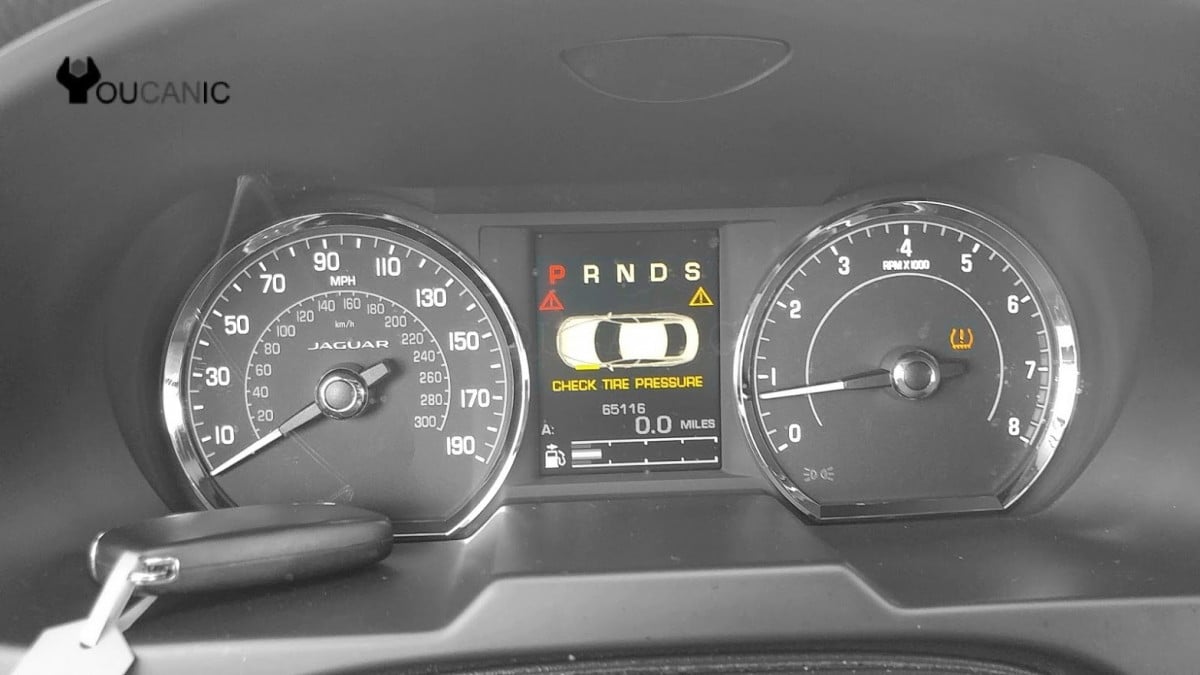
That depends on the year of the vehicle and also the manufacturer. It wasn’t until 2007 that TPMS was considered a safety system and required in all vehicles sold in the United States.
Most cars manufactured before 1999 do not have TPMS. Some vehicles manufactured between 2000 and 2007 have TPMS, and all 2007 and newer vehicles are required to have them.
As of September 1st, 2007, all vehicles sold in the US are legally mandated to have a Tire Pressure Monitoring System and a TPMS light.
The TPMS not only tells you that the air pressure in at least one tire is low but is now considered a safety system. Driving with low air in one tire will decrease handling and lead to catastrophic tire failure or blowout, which can lead to an accident.
My TPMS light stays on.
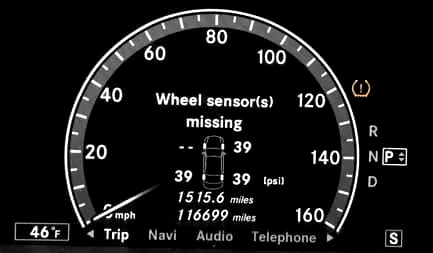
The TPMS light can be frustrating, especially when you check the tire pressure and they are all OK.
The most common problem that causes the TPMS light to say all the time, even when tire pressure is correct, is due to weak batteries in one of the TPMS sensors. The batteries inside the TPMS sensors can not be replaced, meaning the TPMS sensor itself needs to be replaced.
The TPMS light warns if the tire pressure is low, but the same light warns the driver when the system malfunctions. If there is a problem with the TPMS system, the TPMS light may flash in most vehicles; then, it stays on even when tire air pressure is correct.
How do you diagnose TPMS problems?
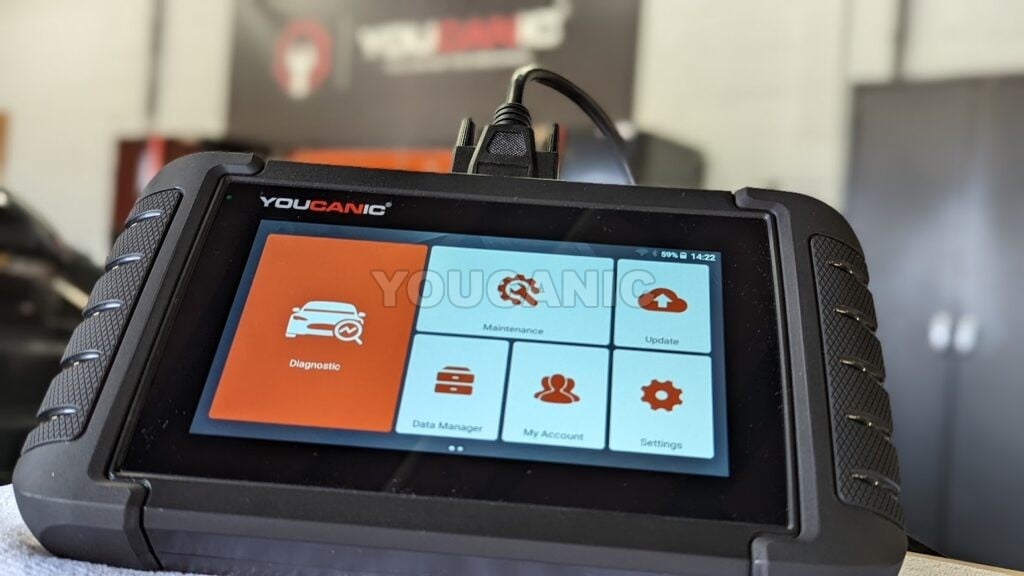
If your vehicle can’t inform you which sensor is faulty, you must use a TPMS Tool to access the TPMS module via the diagnostic port under the dashboard, the driver’s side.
The YOUCANIC Full System Scanner is a perfect example of an OBD-II scanner for troubleshooting your TMPS. This powerful device can read and clear fault codes from the TMPS. It can also let you reset and calibrate your sensors.
The problem will most likely be due to a faulty TPMS sensor. Even though a faulty TPMS module can cause the TPMS light to flash, that’s much less likely to happen.
At What Pressure (PSI) does the TPMS light come on?

Each vehicle is different, but in the US, vehicles must have a TPMS light and turn on the light if the tire pressure drops 25% below the recommended pressure. The recommended tire pressure for your vehicle can be found in the sticker, which you can find by opening the driver’s door and looking at the frame.
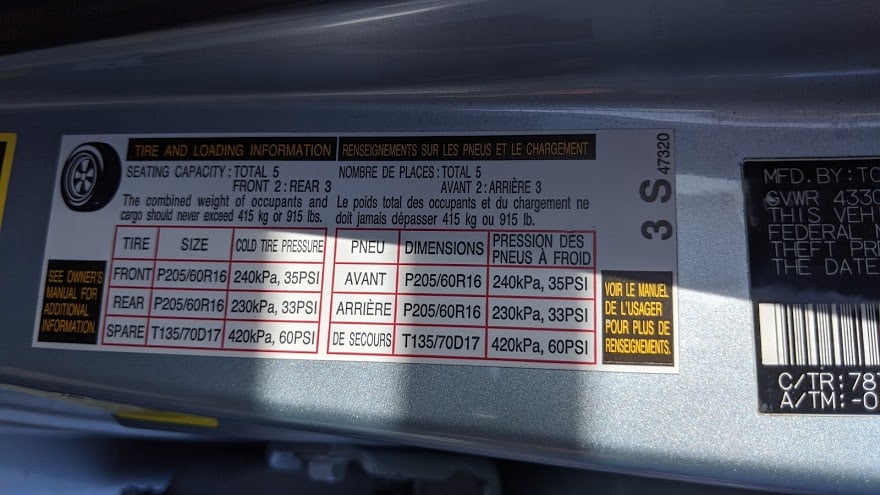
A few vehicle manufacturers program the TPMS light to come on when a 10% pressure drop (about 3 PSI) is detected.
It is possible to notice that TPMS light comes when the temperature changes significantly day and night.
Let’s say you add air to your tires in the middle of the day when it is 75ºF outside and bring all tires to 33 PSI. The next morning, the outside temperatures drop to 45ºF.
Air pressure also decreases at lower temperatures. For example, a 30ºF drop in outside temperature can lead to a 3 PSI drop in tire pressure. This means that in cars with a low tolerance for pressure drop, the TPMS light will come on.
As the day gets warmer or you start to drive, the tires’ internal pressure increases enough to meet the minimum required air pressure and reset the TPMS. The next morning that gets cold, the TPMS will come back on. To avoid this problem, inflate the tires 2 PSI above the recommended tire pressure.
How much air do I put on my tires?
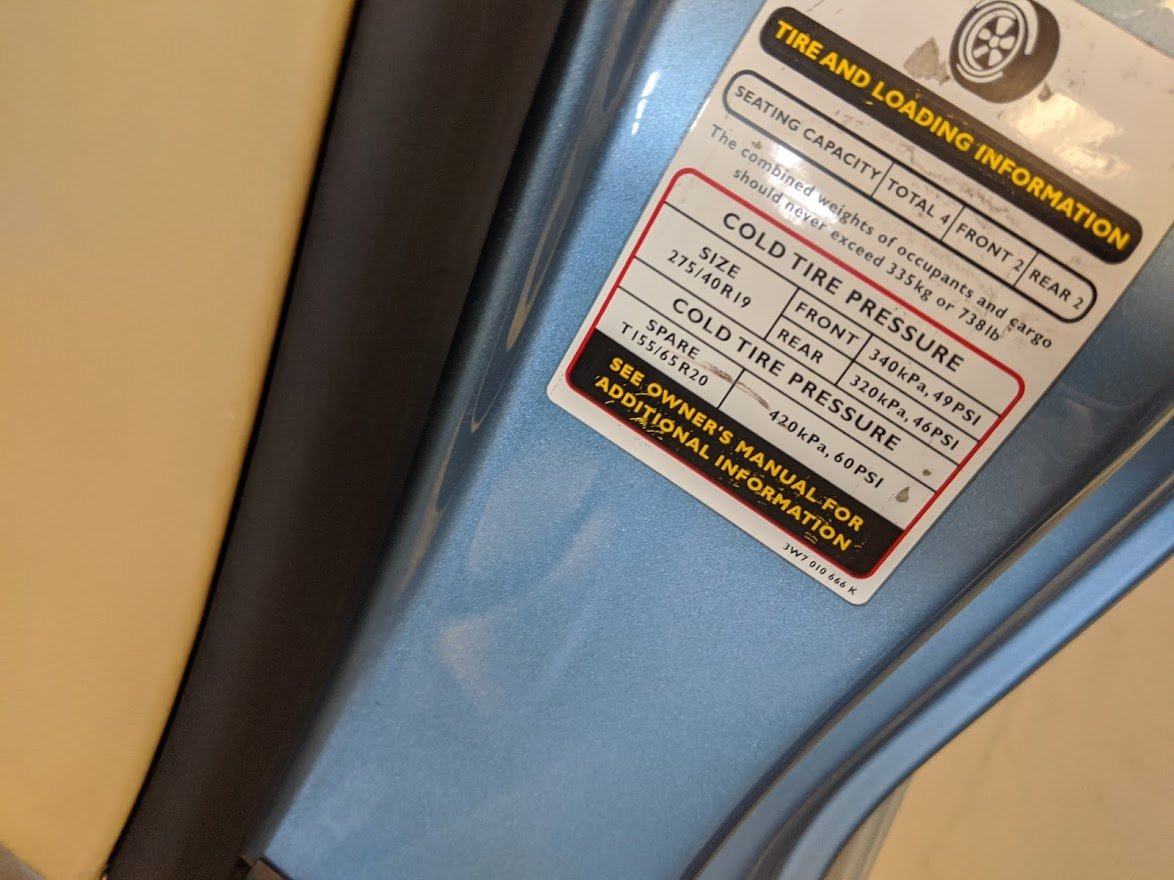
For most 16 to 19-inch tires, the recommended tire pressure is typically 36 PSI.
Larger tires above 20 inches and low profile require higher tire pressure. Typically, air pressure for low-profile tires is 45 PSI.
Remember that the recommended tire pressure for the front tires on certain models may differ from the recommended tire pressure for the rear tires.
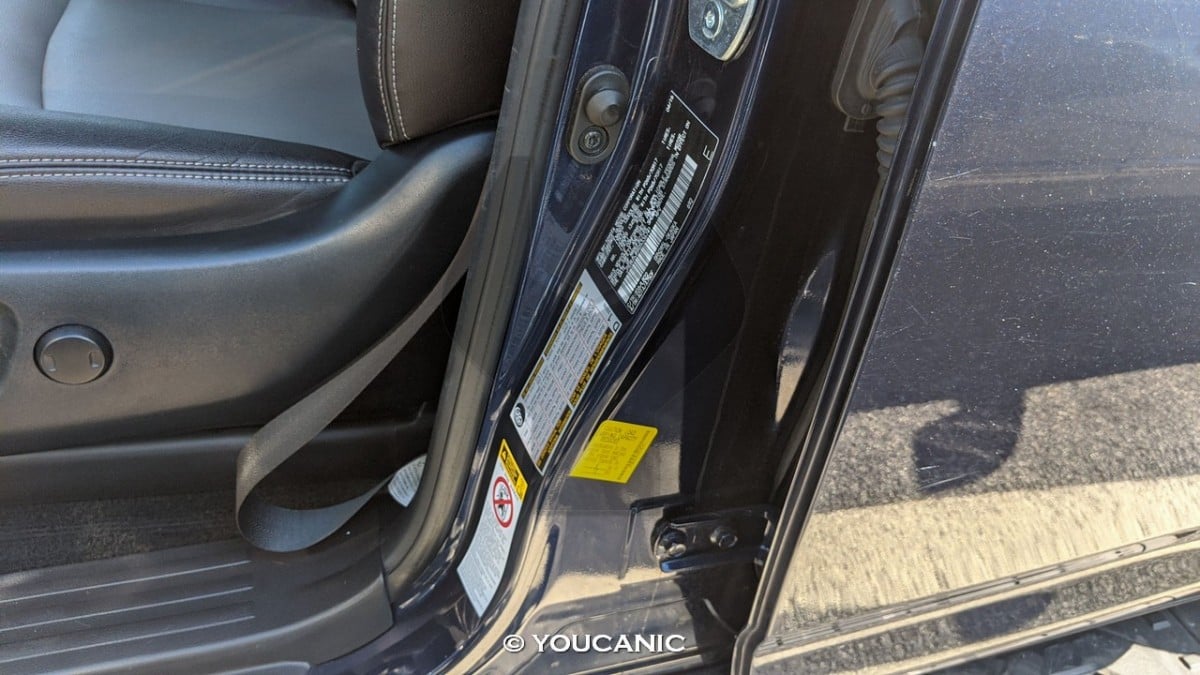
To find the recommended tire pressure on your car, open the driver’s door and locate the recommended tire pressure sticker. Keep in mind this is the recommended tire pressure when tires are cold. If you had to drive to a gas station, go +2 PSI above what is shown on the sticker.
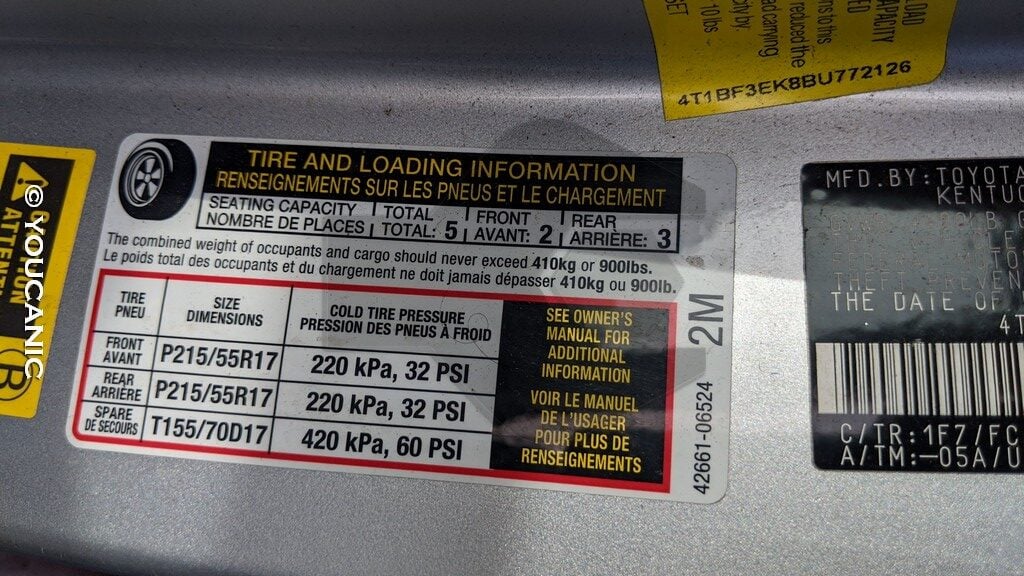
For example, if the recommended cold tire pressure on the sticker is 36 PSI for the front and 40 PSI for the rear, but you had to drive 15 minutes to the gas station, you should put 38 PSI on the front and 42 PSI on the rear tires.
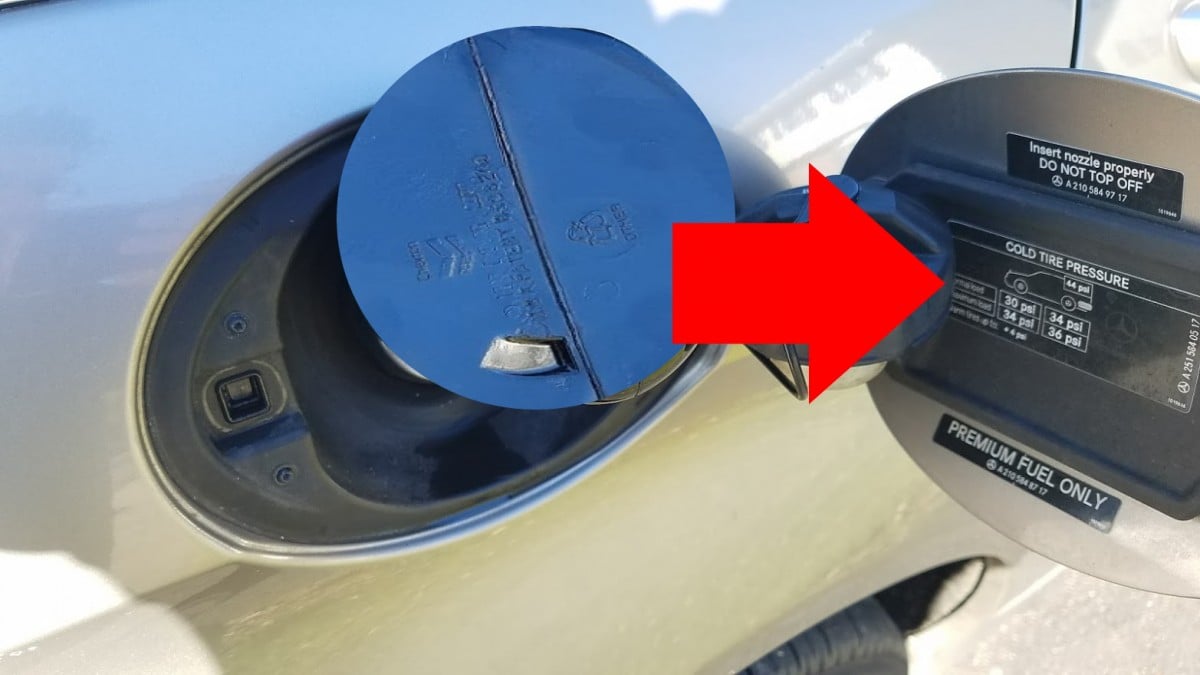
Another common place where you will find the tire and loading information is behind the gas cap.
On some newer cars, the horn will beep to tell you to stop adding air to each tire.
What is the difference between direct and indirect TPMS systems?
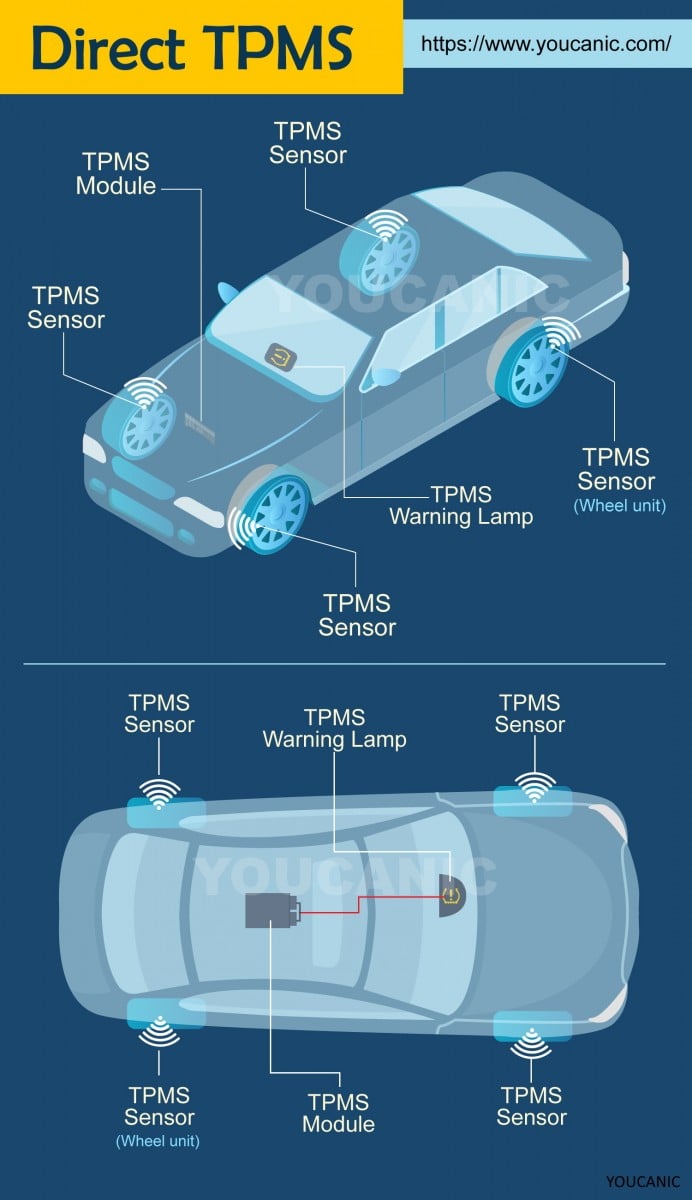
Direct TPMS systems utilize TPMS sensors at each wheel to measure actual tire pressure. Indirect TPMS systems do not use TPMS sensors; instead, they depend on the ABS wheel speed sensors to measure variation in wheel rotations, which indicates low tire pressure.
In a vehicle equipped with a TPMS system, a TPMS sensor is installed on each rim. Here are the pros and cons of the direct TPMS system.
Pros
- Very accurate
- Can trigger TPMS light even when the vehicle is stopped
Cons
- Expensive
- Harder to diagnose
- TPMS sensors may fail
- Batteries in the TPMS sensor last about 10 years
What is an indirect TPMS system?
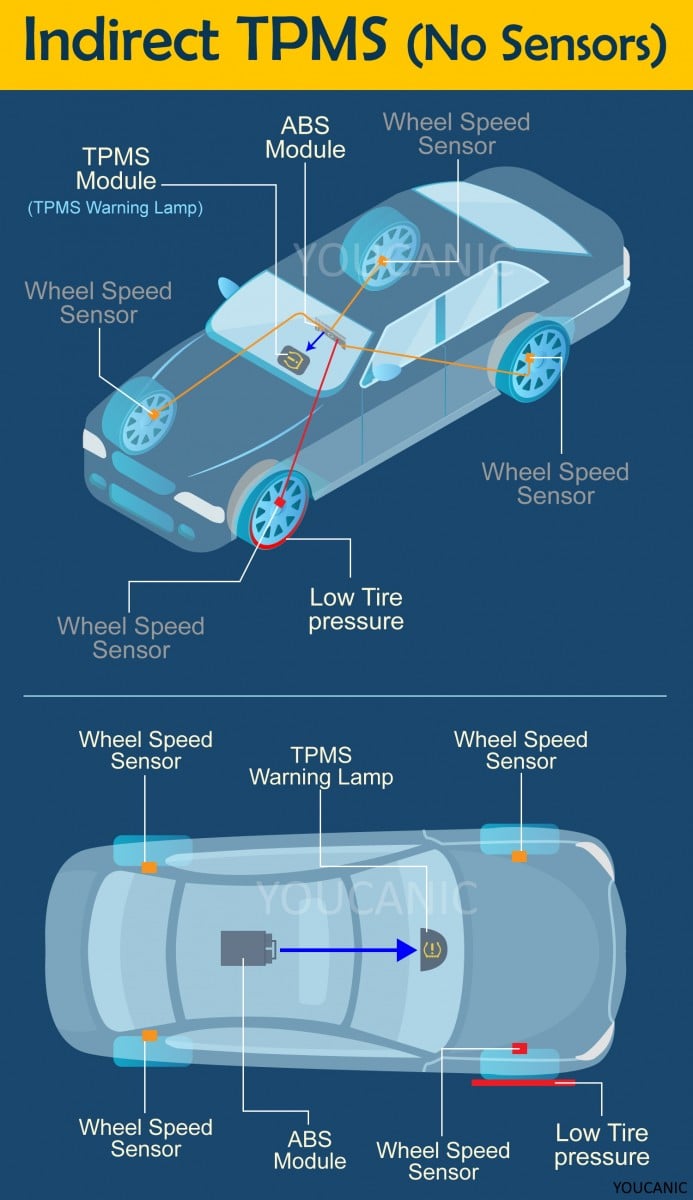
Vehicles that have indirect TPMS systems do not use TPMS sensors. Instead, they use data from the ABS wheel speed sensor to compare each wheel’s RPMs. If one tire is flat, the number of rotations of that wheel will increase to keep up with the inflated tires.
The ABS module detects an increase in wheel RPMs and sends this information to the TPMS module, triggering the TPMS light.
Pros
- Inexpensive
Cons
- Not sensitive to small tire pressure change/
- Unable to detect underinflated tires if the tire pressure drops in all four tires equally.
- Can not detect changes in tire pressure when the car is stopped.
- One tire with excessive tread wear can lead to a TPMS light coming on.
Indirect TPMS systems can even detect significant tire pressure drops but are not as accurate as direct TPMS systems. These systems are not as sensitive to pressure changes and do not measure the tire pressure until you start to drive. This means you may drive with a flat tire and not know after driving for a few minutes.
One disadvantage for cars with an indirect TPMS system is that all your tires lose air pressure equally and are underinflated. A TPMS system may not detect air pressure loss because all tires rotate at the same speed.
Does the TPMS cause the check engine light to come on?
No.
The TPMS light does not trigger the check engine light. Don’t fall for it if someone selling a car tells you the check engine light is on because a tire is low or the TPMS light is on.
Unless there is an electrical issue with the vehicle, the TPMS and check engine light may come on simultaneously, but that is a scarce case and not by design. No car manufacturer programs the check engine light to come on when tire pressure is low.
Can I disable the TPMS?
While it is possible to disable the TPMS system, there is no easy or simple method for a car owner to disable the TPMS system or turn off the light without correcting it.
In certain countries, it is illegal to disable, delete, remove, or cover the TPMS light. For example, it is illegal for US repair shops and service centers to disable the TPMS light.
Please do not go to an auto repair shop or auto dealer and ask them to disable the TPMS system. Reputable repair shops will refuse, even though some have advanced tools to do so.
Why does the TPMS light come on in the morning?
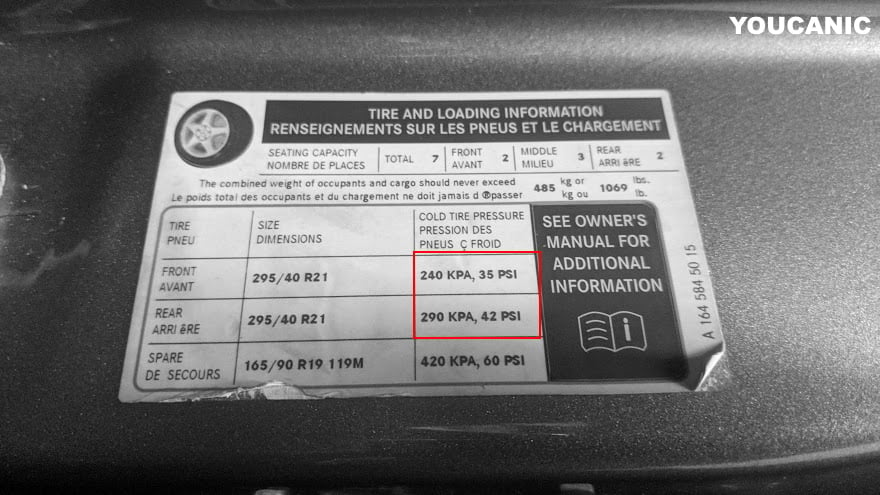
In cold temperatures, the pressure in the tire drops up to 3 psi, which can be enough to trigger the TPMS light. As you start to drive or the day gets warmer, the tire warms up, which increases the air pressure, and in some cases, that increase is enough to turn off the TPMS light.
If you notice this pattern, increase air pressure in all tires by 3 PSI above the recommended tire pressure shown on the driver’s door sticker.
How do I know if my car has a direct or indirect TPMS system?
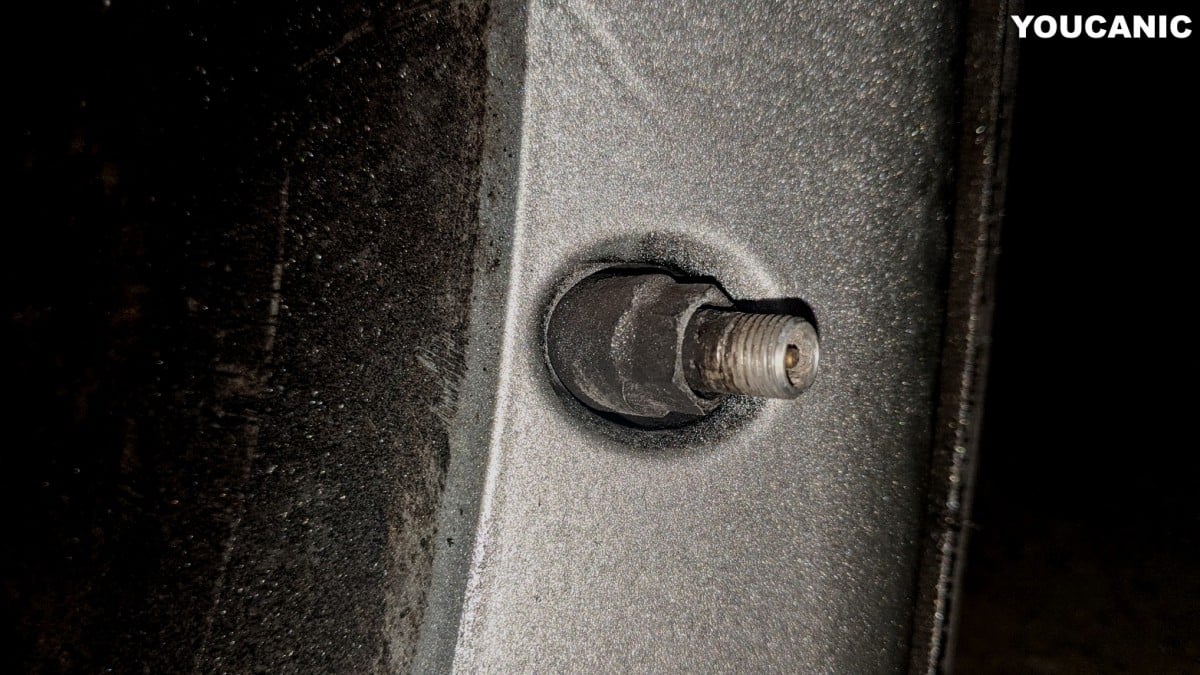
You can identify if your vehicle has TPMS sensors in most vehicles by looking at the valve stem. If you notice a thick valve stem, you most likely have TPMS.
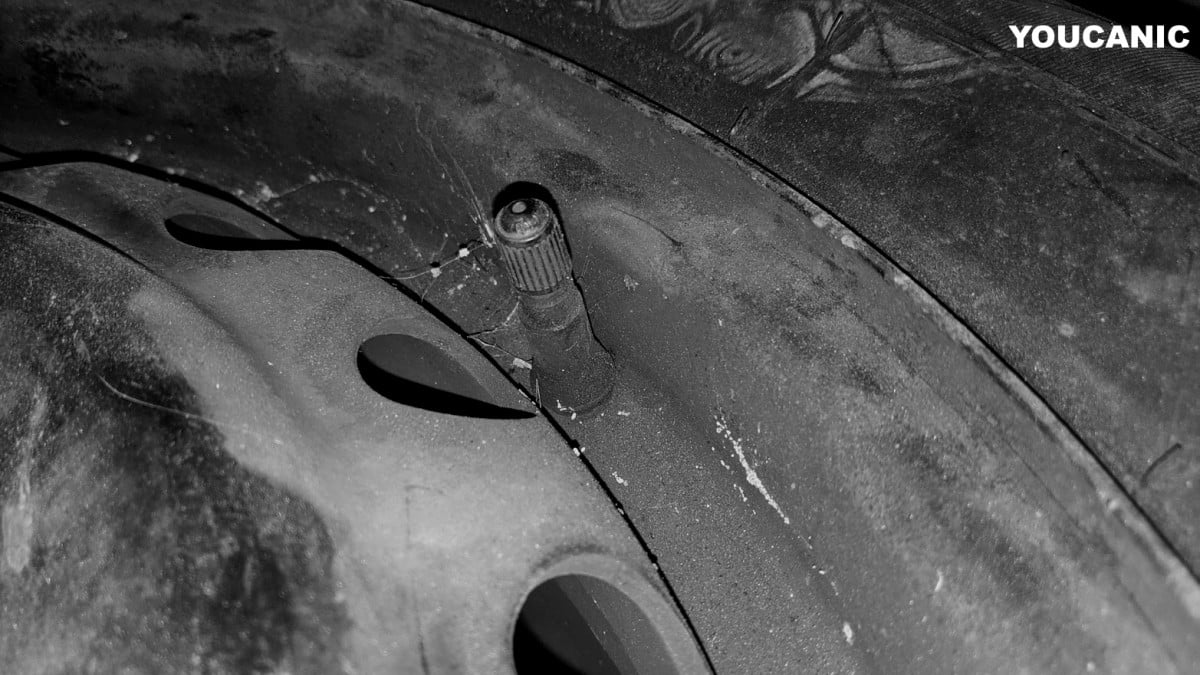
If you notice a simple valve stem, your vehicle may not have a direct TPMS system. It is possible that this vehicle could have indirect TPMS.
Are TPMS sensors directional?
Most TPMS sensors are not directional and can be used on both left and right sides.
A few exceptions exist to this rule, such as the early Cadillac and Corvets, which used directional TPMS sensors.
Do I need to program the TPMS sensors after a tire rotation?
No.
Most newer cars will automatically detect the new positions of each wheel after the first drive.
Some older vehicles require that you carry out a certain procedure with the ignition key or press the RELEARN button under the dashboard to initiate the relearn mode.
If your vehicle requires a manual initial of TPMS relearns, it will be noted in the owner’s manual.
Does fix-a-flat damage TPMS sensors?
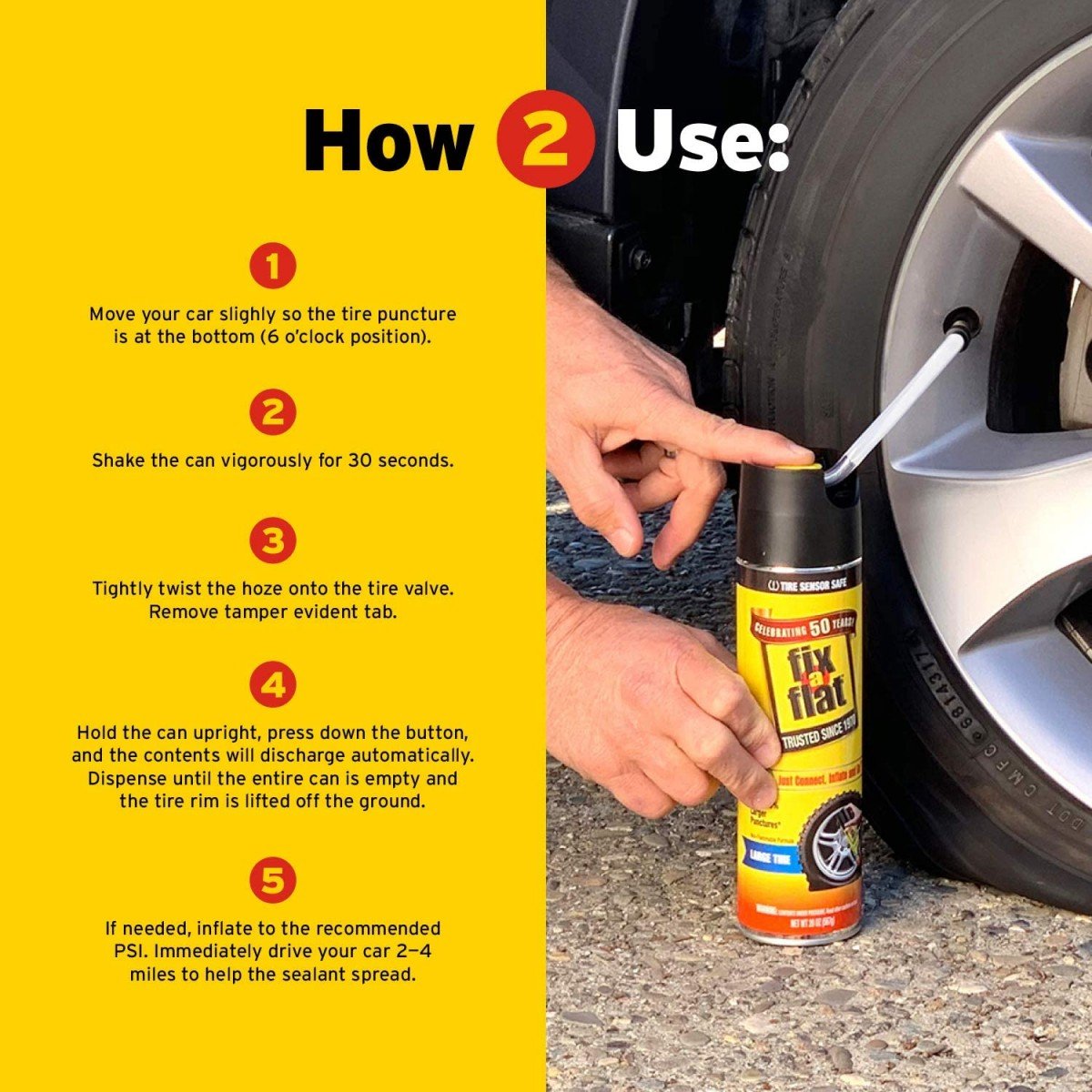
We often get asked if fix-a-flat is safe to use with TPMS sensors.
Fix-a-flat is designed to work with TPMS sensors. There is a chance that fix-a-flat can damage (end up plugging the small hole in the sensor) if you don’t follow the directions in the can.
We recommend getting the tire repaired or patched instead of using Fix-A-Flat. Only use Fix-A-Flat in emergencies, and keep in mind that the TPMS sensor may get damaged and may need to be replaced.
You will run into a bigger problem if you use to fix a flat incorrectly. The fix a flat glue can get on the TPMS sensor and block the small hole inside that detects air pressure. Once the hole gets covered, the sensor can no longer get an accurate pressure reading, leading to the TPMS light coming on.
If the TPMS sensor gets damaged, it will need to be replaced. TPMS sensor replacement can cost anywhere from $65 to $150.
What frequency do TPMS sensors operate on?

The TPMS sensors on most vehicles, including Audi, Honda, BMW, Mercedes, Mazda, Kia, Hyundai, Honda, Toyota, etc., use either 315 MHz or 433 MHz. The only exception is certain GM models, which use 314.9 MHz sensors.
The frequency used by the TPMS sensor will be stamped in the sensor itself.
If the TPMS sensor is installed in the vehicle, you must use a TPMS tool to read the frequency and the ID.
Another method to find the TPMS sensor frequency is to call your vehicle dealer and tell them your VIN. Most vehicle manufacturers can tell the frequency of the sensors in the vehicle.
Lastly, if you have the sensor ID but not the frequency, you can visit the FCCID website and look up the frequency.
How do I get the TPMS sensor ID?

All sensors TPMS sensors have a unique eight-digit ID. This number is printed on the sensor or read with a TPMS tool. If you are replacing one or all TPMS sensors, write down each ID number and the wheel position, as this ID will need to be recorded with the TPMS module.
If the TPMS sensor is installed in the car, you will need a TPMS tool to read its ID, which is eight digits long.
Can you relearn a new TPMS sensor?
Each vehicle is different.
Here are the three methods on how TPMS sensors are relearned.
Automatic Relearn – Many newer vehicles have what is called the auto-learn mode. If you replace one of the TPMS sensors, the vehicle recognizes the old sensor’s missing signal and enters auto-relearn mode to pick up the new TPMS sensor’s ID.
Some vehicles have a limit on how many new TPMS sensors will be recognized. This means on certain cars, it will auto-learn one new sensor, but not when you replace all four. If you replace more than one sensor, you may need to use a TPMS tool to program all sensors. In some cases, the vehicle may be able to relearn all new sensors.
Manual Program—Some vehicles require that the TPMS be triggered with a TPMS tool. The relearn procedure may require an OBD-II scan tool to program the new sensor. Most carmakers have specific steps you need to follow to trigger the relearn procedure without needing the OBD-II.
Your vehicle will use one of these methods. It doesn’t mean you can use any of these methods to get your car to recognize the new TPMS sensors.
Can I install a TPMS system on a vehicle with no TPMS?
If your vehicle doesn’t come with a TPMS system, don’t worry. You can install an aftermarket one. Some aftermarket TPMS kits don’t require replacing the valve stem. You remove the valve stem caps and install the receiving unit on the dashboard. That’s it. It takes about 10 minutes.
My car doesn’t have a recommended tire pressure sticker.
If your car does not have a sticker showing recommended tire pressure on the driver’s door, the sticker should be behind the fuel door. Open the fuel door (gas cap) and check for the sticker.
You will also find the recommended tire pressure in the owner’s manual. If you can not find the recommended tire pressure anywhere, inflate tires to 40 PSI. Verify this value by calling your dealer.
We hope you find the TPMS – Tire Pressure Monitoring System Explained guide helpful. Check these troubleshooting and repair guides for more help on your vehicle.







